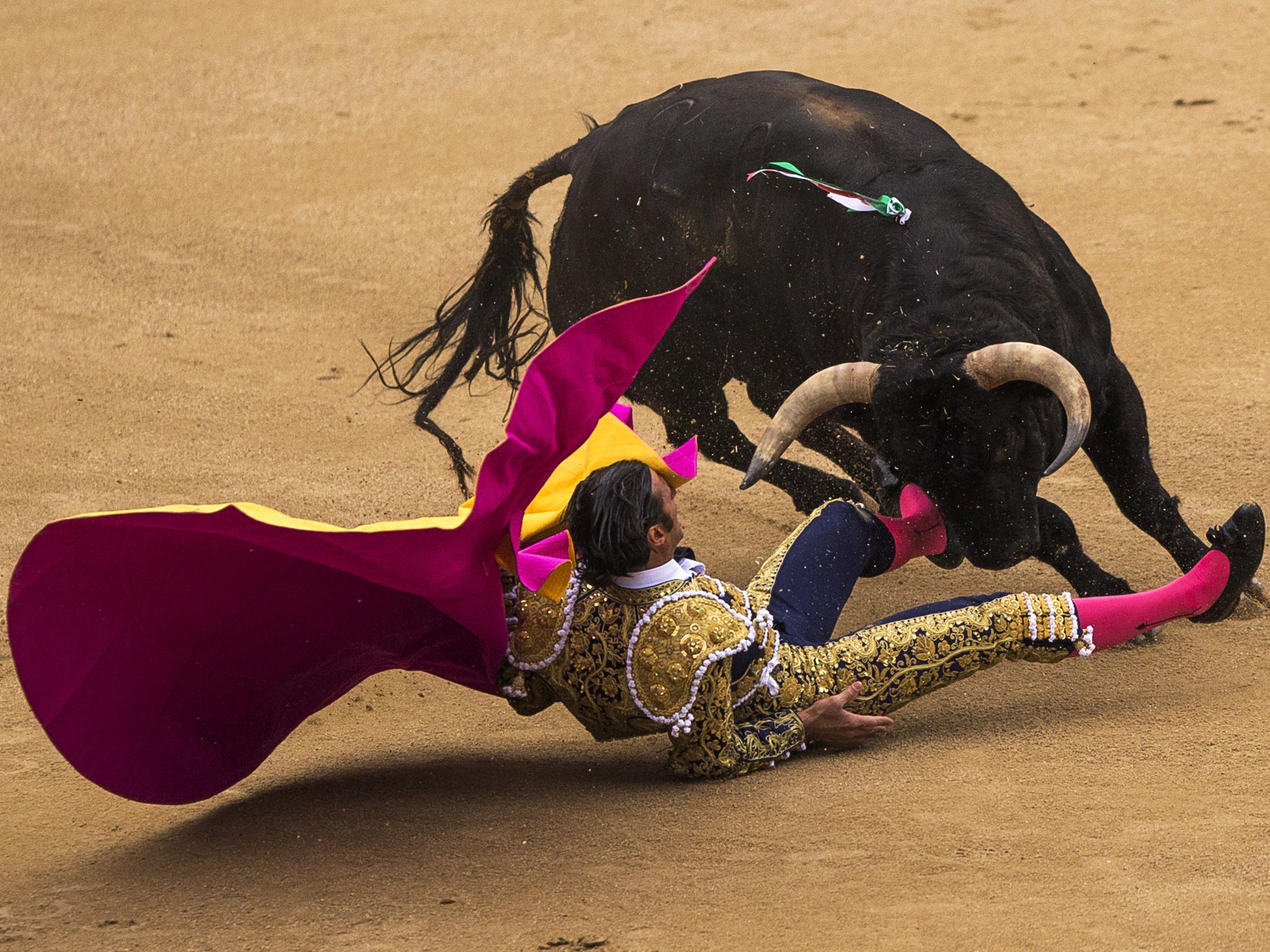Is it finally time for Spain to ban bull fighting?
Three toreros were gored this week in Madrid's Fiesta of San Isidro. So should the country hang up the red capes and move with the times?

On Wednesday afternoon, in Madrid's Las Ventas bullring, as bulls thundered towards the outstretched swords of their executioners, it was hard to imagine that 24 hours earlier, it had briefly been the humans, rather than the animals, that were hurting more.
In just one corrida, or session, on Tuesday, three bullfighters were gored (one seriously), producing a series of spectacular images that – presumably following the hoary newspaper editorial adage of if it bleeds, it leads – quickly made top media stories in and outside Spain.
For one bullfighter to be hurt in the ring is far from unusual, and even two is not uncommon. But with three out of action in such rapid succession, Madrid's Fiesta of San Isidro, Spain's three-week-long highlight of the official season, was suspended for the first time in 35 years.
However, those thinking that the series of human bodies (as well as the usual ones of bulls) spouting blood all over newspaper pages would lead to a wave of revulsion in Spain against bullfighting per se may have to reconsider. There was, it is true, a brief but intense burst of anti-bullfighting comments and posts on social media by animal-rights activists, inspired by the gorings. And Juventud Taurina, a pro-bullfighting association for young people, organised almost equally quickly a demonstration to protest against "the attacks and insults on Internet".
But just as inside Las Ventas the sand covers any sign of spilt blood and the bullfighting goes on, the gorings and their implications have quickly lost major media interest across Spain.
Paco Gascon, teaching in a small city in Spain's bullfighting heartland of Andalusia – and whose secondary school is opposite the local ring – believes that "bullfighting should be prohibited, but I don't think that the vast majority of Spaniards see it as a pressing issue either way".
"This latest goring happened by chance," he says, "not as some sort of sign of fate that this is the beginning of the end of bullfighting."
In pictures: Madrid matadors gored at 2014 San Isidro festival
Show all 10An Ipsos Mori poll last year showed that most Spaniards do not approve of public funds being used for bullfighting, that 75 per cent have not attended a bullfight in the past five years, and only 29 per cent were in favour of it. Yet actual banning commands little political attention.
Last year, Spain's parliament bestowed cultural-heritage status on bullfighting, making it much harder for further bans beyond that of Catalonia in 2010, and the Canaries in the early 1990s, to take effect. Jose Luis Rodriguez Zapatero, the former Socialist Party prime minister, has said that he is not in favour of prohibition, too, while the currently ruling Partido Popular party has rejected the notion completely.
In the mainstream media, too, bullfighting's social acceptability is rarely questioned. In Spain's best-selling daily El Pais yesterday, San Isidro's bullfights garnered a hefty two pages of coverage (one, it should be said, on the improving state of health of the three toreros), the same as its chief conservative-minded rival, El Mundo. (On the El Pais website, incidentally, you have to click through the "Culture" to get to bullfighting, rather than – as non-Spaniards might think – "Sport".)
What seems to be harming bullfighting's survival prospects more is Spain's recent recession – officially over, but still steadily eroding the country's social fabric – and anecdotal evidence of an increasingly senior audience.
By 2010, three years into Spain's economic turmoil, withering town-hall budgets meant that the number of bullfights had already fallen by 34 per cent nationally, and by 51 per cent in Andalusia. Showcase events such as Madrid's still make a profit, but bullfighting's bread-and-butter shows in smaller towns and villages reportedly continue to dwindle.
Furthermore, with many of Spain's younger generations battling 53 per cent youth unemployment and unable to afford bullfighting's relatively high ticket prices, it seems they are increasingly seeking their entertainment outside the high, whitewashed walls of Spain's bullrings. As far back as 2009, bullfighting was already shown to be most popular among Spain's over-45s: as Santi Moya, one unemployed Andalusian woman in her thirties, puts it, "for many young people, bullfighting is just not our thing".
Subscribe to Independent Premium to bookmark this article
Want to bookmark your favourite articles and stories to read or reference later? Start your Independent Premium subscription today.

Join our commenting forum
Join thought-provoking conversations, follow other Independent readers and see their replies